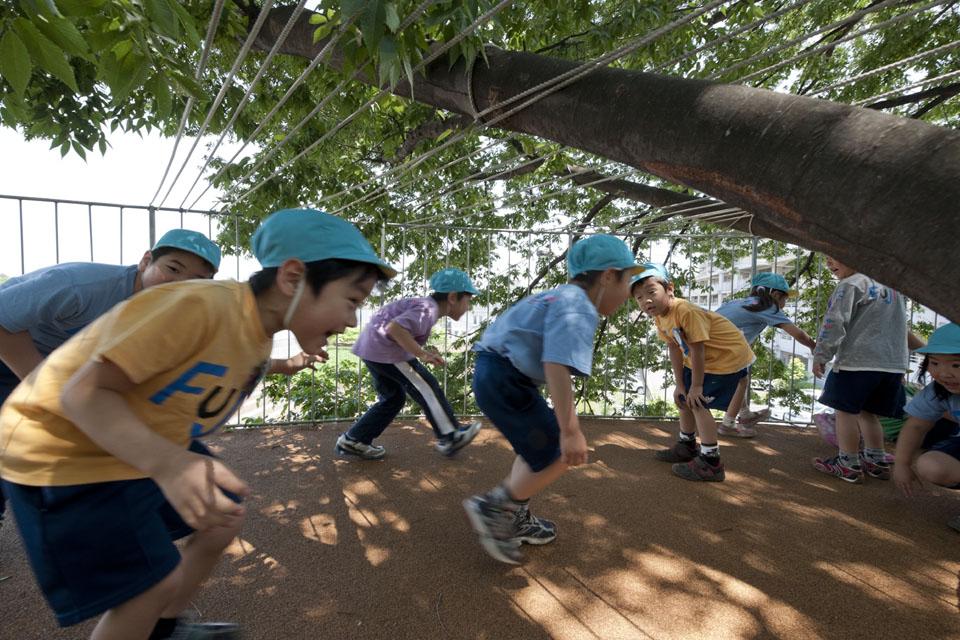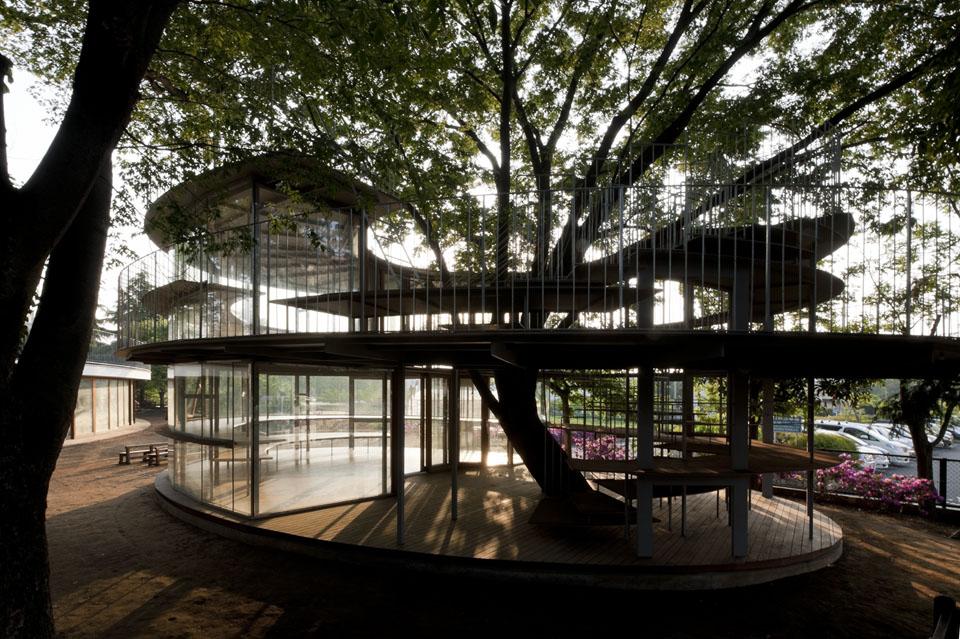The Japanese Zelkova
The project consists of a wood and transparent glass volume spiraling upward, enveloping a Japanese Zelkova tree. This is not just any tree anywhere, but a Zelkova with a story and the true protagonist of this project. Planted more than 50 years ago, the Zelkova in the Fuji Kindergarten was hit by a typhoon and almost uprooted. The tree dried out completely but recovered despite general disbelief. Older residents of the area remember this Zelkova because it was the only tree to be used by children for climbing and games even before there was a kindergarten. And before the construction of "Ring Around a Tree," a small tree house had been built in the Zelkova. A "place-playmate" for several generations, as well as temporary shelter from rain and sun for children waiting to go home, in its latest adventure, the Zelkova becomes the natural subject—and living element—around which the Tezuka's design takes shape.
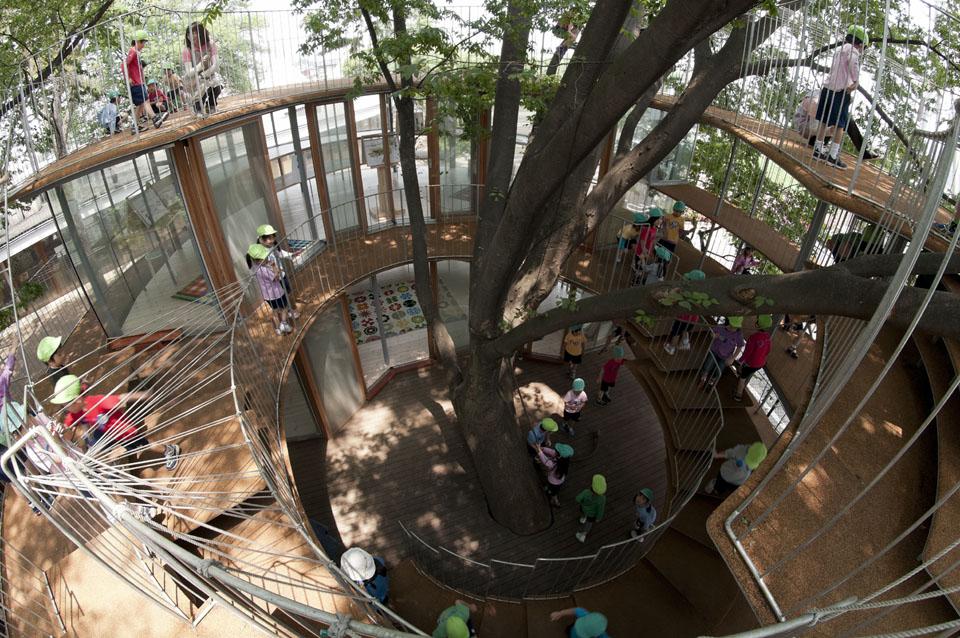
The preferred space for teaching preschool children avoids the classical dynamics of frontal lectures. In "Philosophical Investigations," Ludwig Wittgenstein writes that what children and foreigners have in common is the absence of knowledge of language and a set of codified rules. This leads them—in the first instance—to learn through the senses and the body. To give the children more freedom to move around the school, the directors of the Fuji Kindergarten requested Tezuka to design spaces without furniture: no chairs, desks or lecterns. As a result, "Ring Around a Tree" offers an architecture where there are no measures taken to constrain space, in order to liberate the body.
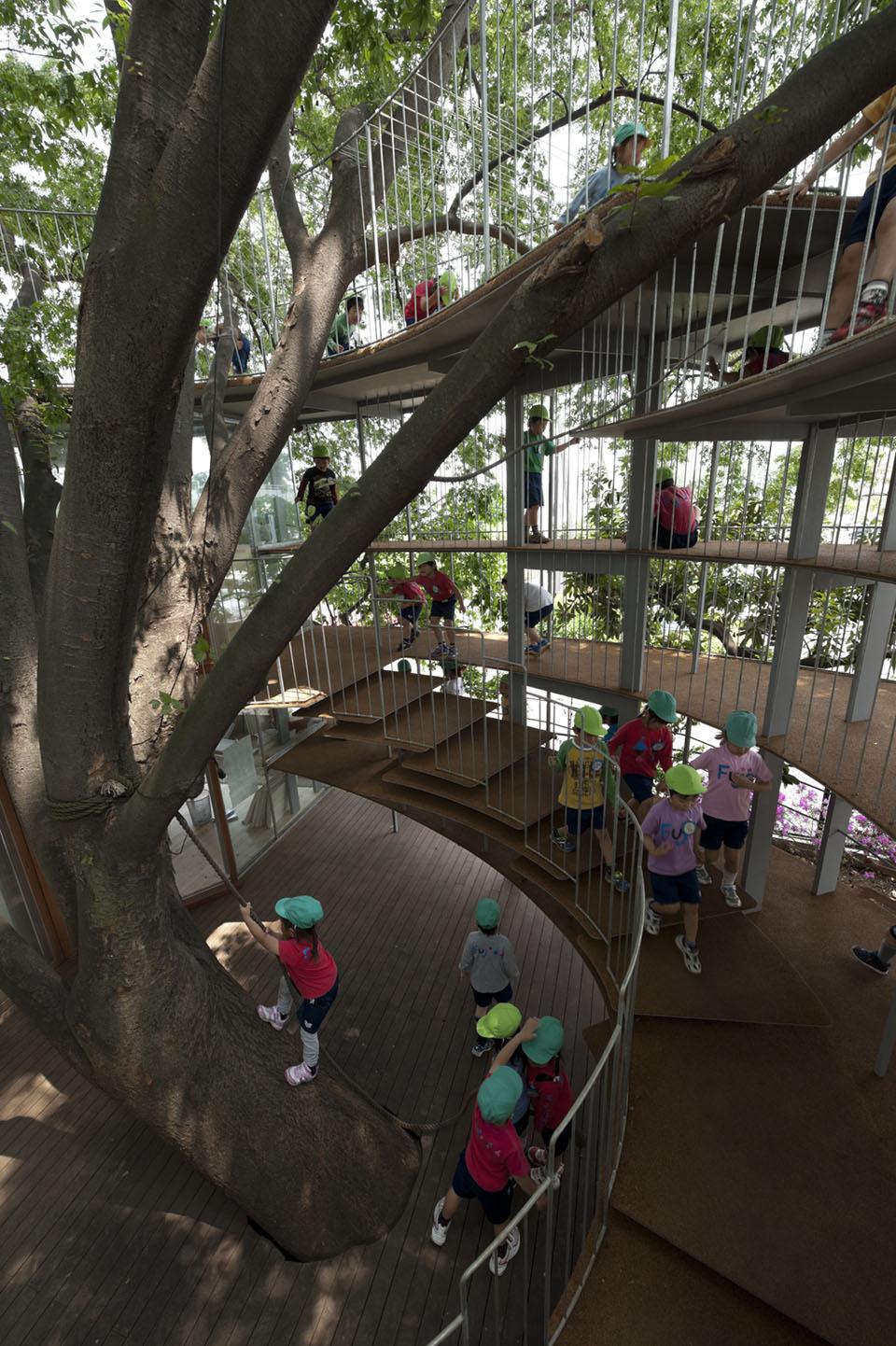
The space created by Tezuka seems to have just two floors, but for the children the building has six floors with volumes that are one meter high. The compressed spaces, which can only be reached by crawling, further the freedom of movement and ability to use the body as a means of learning.
Elements like railings and handrails are very slender, and almost disappear with a height to depth ratio of 1:40. The interior floors are made of wood and all outdoor areas are covered with soft rubber mats to help cushion the children's inevitable falls. Children move up and down from all sides, turning this into a narrative architecture of moving images. A visual turbine driven by the energy of childhood and nature.
"Ring Around a Tree" offers an architecture where there are no measures taken to constrain space, in order to liberate the body.
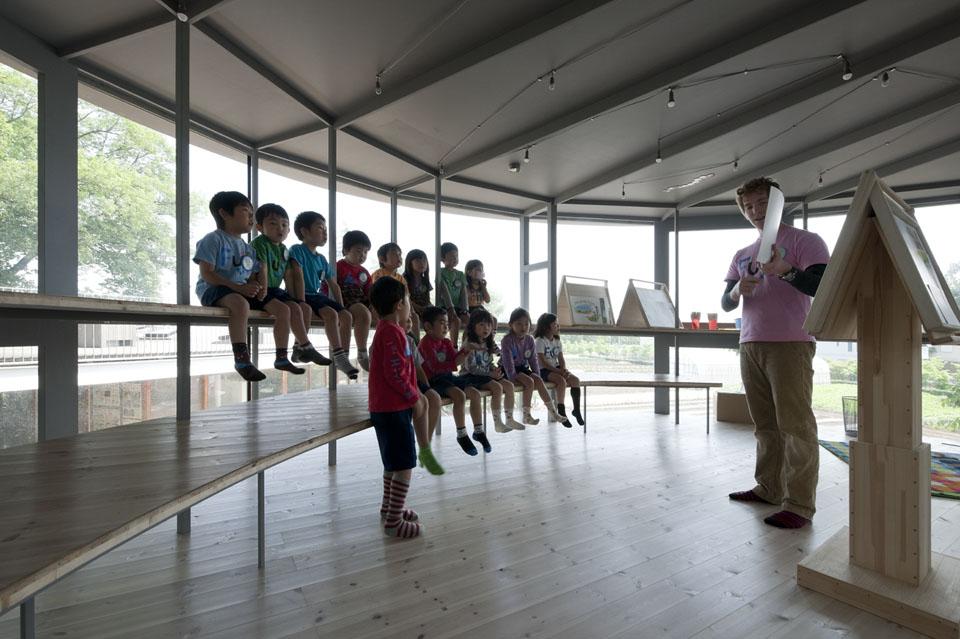
Ring Around the Rosy
A pocketful of posies
Ashes, Ashes
We all fall down!
Ring Around A Tree
Project: Tezuka Architects
Construction: Nichinan-Tekkou
Structural Engineer: Ohno Japan Co., Ltd/Ohno Hirofumi
Location: Tachikawa, Tokyo, Japan
Area: 146.98 sq.m.
Completion: 2011
Salvator-John A. Liotta
